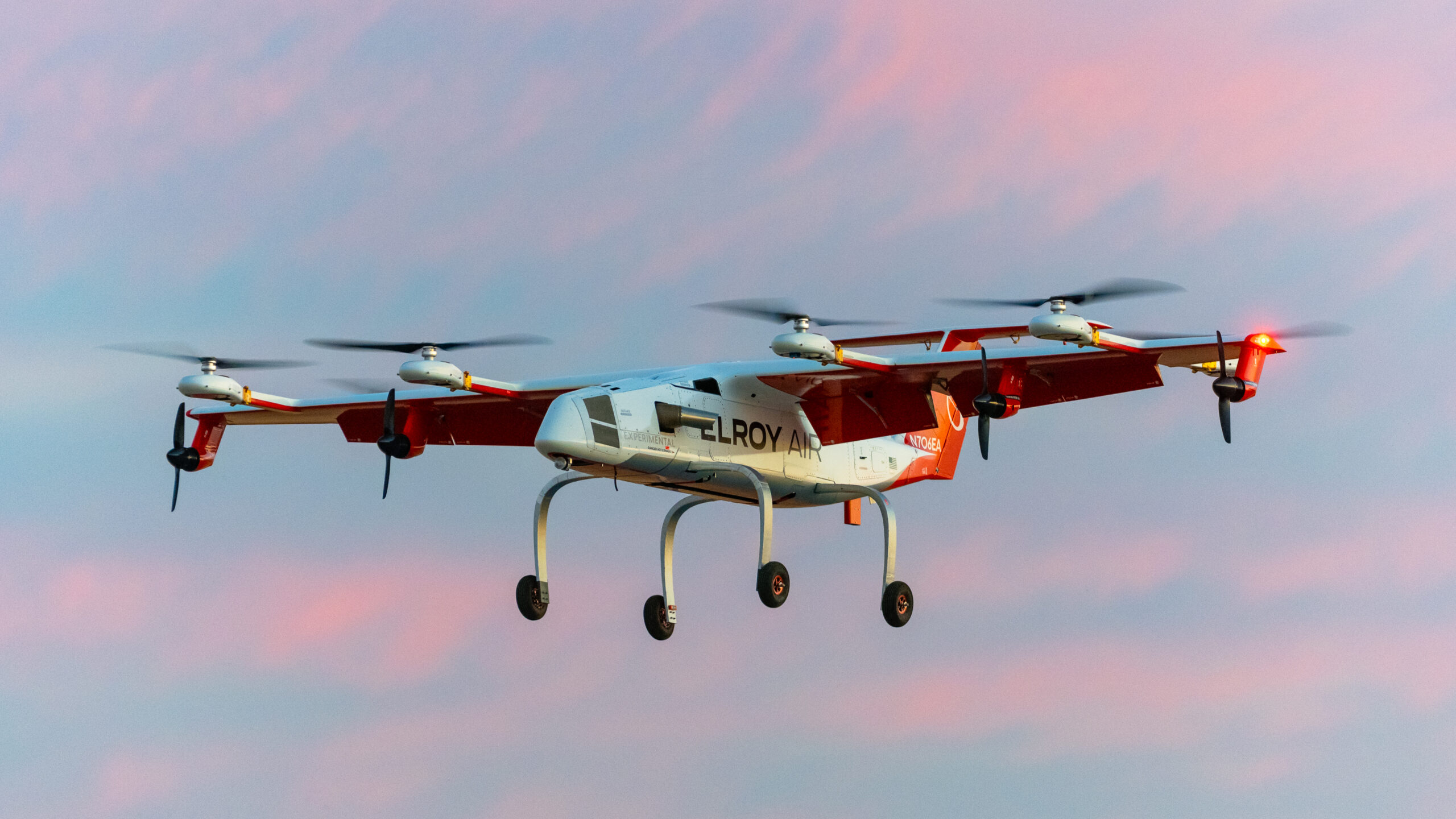Elroy Air flies first autonomous hVTOL aircraft
17 / 11 / 2023

Elroy Air Chaparral C1 aircraft. Photo: Elroy Air
US drone firm Elroy Air says it has flown the world’s first turbogenerator-hybrid electric vertical take-off and landing (hVTOL) aircraft.
The flight of the Chaparral C1 autonomous hVTOL aircraft was carried out on November 12 at Byron Airport in California, where the Elroy Air Team runs flight test operations.
The C1, which features distributed electric propulsion and a turbogenerator-battery architecture, took off vertically, flew for 57 seconds, and landed successfully.
“This is an exhilarating day for our team and the industry as a whole,” said Elroy Air co-founder and chief executive Dave Merrill. “In 2017 we had an unconventional idea to develop an autonomous long-range VTOL aircraft that would fill a major capability gap for middle-mile express shipping, humanitarian logistics, and military resupply.
“On Sunday our Chaparral C1 became the first turbogenerator-hybrid electric hVTOL aircraft to take flight. This marks a major moment for the industry as hybrid-electric aircraft enable the dual benefits of runway-independent safe redundant propulsion, and long-range flight well in excess of battery power alone. Our accomplishment puts Elroy Air one step closer to delivering a transformative logistics capability to our customers and partners.”
Hybrid-electric aircraft have the potential to greatly evolve autonomous air cargo operations. For vertical flight, distributed electric propulsion (DEP) using multiple redundant rotors enables robust and safe operations even in the case of motor failure – a key enabler for autonomy.
However, today’s battery-electric eVTOL aircraft designed for Air Taxi and cargo operations are range-constrained due to the energy density limitations of available battery cells, and they must be operated in locations with substantial battery-charging infrastructure.
The combination of DEP and turbine-based electrical power generation yields a best-of-both-worlds option first suggested by NASA researchers in 2008.
Turbogenerator-hybrid architecture addresses the limitations of all-electric systems by combining a gas turbine-driven generator with batteries – enabling long-range missions (a “must-have” for logistics) without requiring charging infrastructure, as well as safe redundant flight for autonomous operations.
“The use of hybrid electric powertrains is not trivial – balancing battery and turbogenerator power output to respond to load demand requires power management systems that are properly governed to facilitate effective and efficient flight,” explained Ashish Bagai, advanced rotorcraft expert.
Such systems for true VTOL and vertical flight capable aircraft are more complex and demanding than for fixed wing systems because of the discrepancies in power requirements in different flight regimes,” explained Ashish Bagai, advanced rotorcraft expert. “This is a major step in the development of hVTOL flight – one that underscores the potential utility value of DEP concepts. It’s very encouraging.”
Elroy Air has previously secured commitments from partners in the commercial, defence and humanitarian markets including Mesa Airlines, Bristow, FedEx and Libra Group subsidiary LCI.
Elroy Air sees demand for its autonomous cargo aircraft rise
Libra Group’s LCI to acquire up to 40 Elroy Air cargo aircraft














